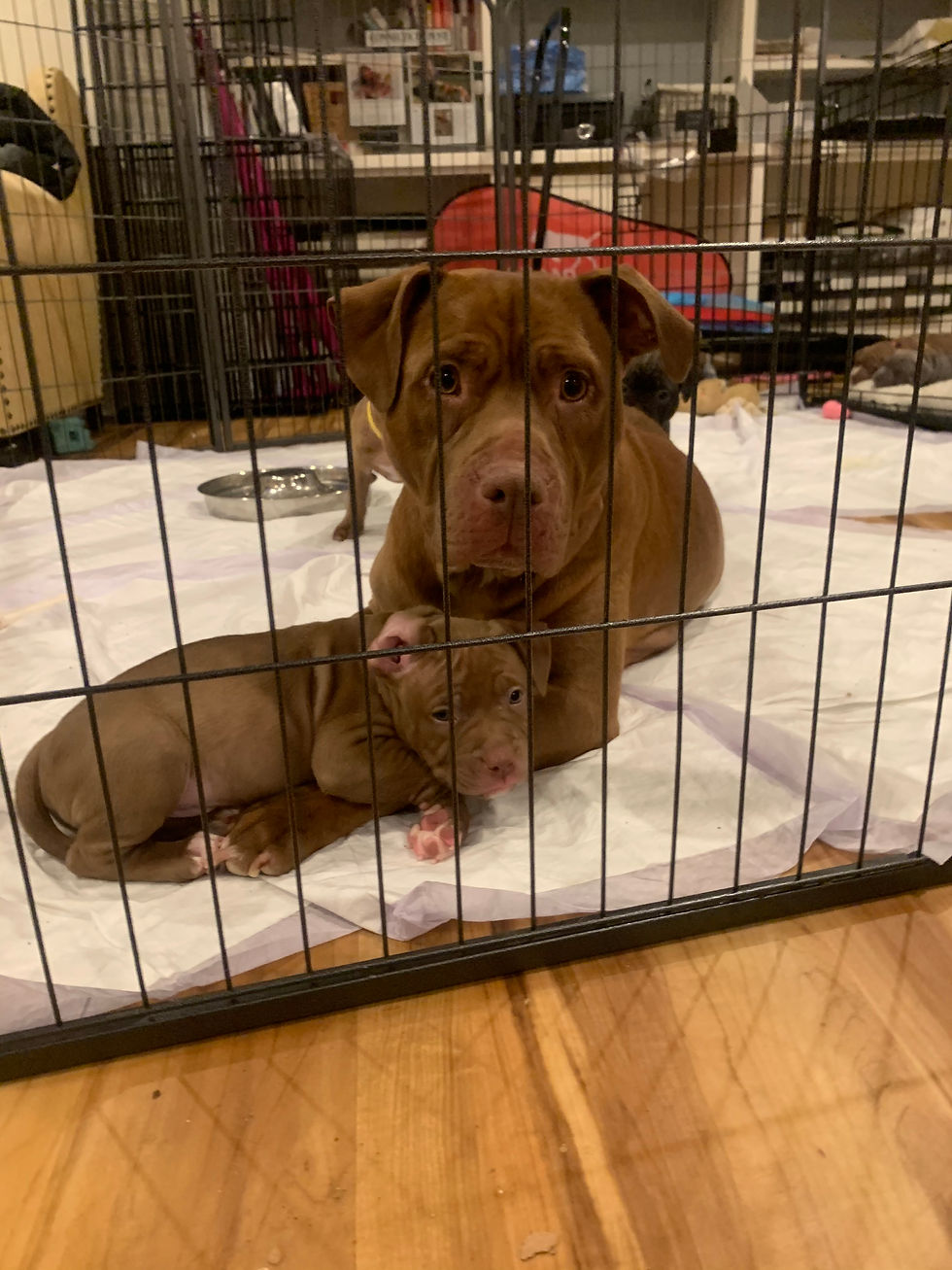
Puppies explore the world with their mouths. It’s completely natural and WILL happen, but damn can it hurt. In general, undesirable puppy behavior should be stopped immediately and redirected onto something appropriate. If your puppy is mouthing the side of the couch, stop them and give them something appropriate to chew on. But puppy biting towards humans can be more complicated than this. I’ve had hundreds of puppies and young adult dogs go through my program and teaching bite inhibition is almost always top priority for me and the owners. In nature, dogs and puppies learn bite inhibition mostly from each other.
“Puppies play by tumbling around and biting one another. Suddenly one of them gets a grip on another’s ear. It bites hard and the poor brother or sister howls in pain. The other puppy succeeds in getting its teeth in the tender skin of its sibling’s belly. Much whining and yelling follow. They stand still for a short while, then let go.
Next time they act slightly differently. One will grasp the other’s ear only until the puppy begins making noise. It will react to the sibling’s vocal distress, which works as a mechanism to inhibit or control aggressive behaviour. Previous experiences showed the puppy it is better to let go at the first signs of vocal distress, or its belly will hurt. This is learning by trial and error." (Abrantes, Roger. Dog Language. Dogwise Publishing, 1997, p23.)
But let’s be clear here, puppies can certainly learn bite inhibition towards people as well.
PREVENTION IS KEY
Puppies may SEEM to have meltdowns for no reason- but just like little kids- they are tired. They just become little assholes for no reason. It’s comparable to a temper tantrum.
Manage their work to sleep ratio- don’t overdo it. This gets really overlooked. ITS A BABY. Manage this. They won’t put themselves to bed. It’s incredibly rare for your puppy to just put itself to bed. Instead, it’ll bite you and YOU have to decide whether it’s redirectable- sometimes it’s not. When it’s not, instead of bothering with redirection, just put him away. Manage their rest. This is where they confirm the learning they’ve done throughout the day. Fulfill your puppy before putting them in crate for nap time. See my crate training blog here: https://pitstop-training.com/blog/f/crate-training
If and when your puppy does start biting you, think about what you’d do with your kid here. You wouldn’t just keep letting them do the destructive behavior, but you also wouldn’t kick them. Dogs learn in the same learning principles- the ABC’s of behavior- antecedent, behavior, and consequences. Use time outs here- this is a way to temporarily remove an animal’s access to desired reinforcement (which is probably you). Tiny time outs are huge here. Even just 15-20 seconds. This must be done with consistent contingency and speedy contiguity. Put them in a place (cage) without access to whatever the puppy finds reinforcing. Let the time out do all the work for you. After the time out, bring the animal back to the “scene of the crime” to have the opportunity to be reinforced for wanted behaviors.
The most common mistake here is to do long periods in the crate for time outs- the puppy should have the opportunity to come out and try again to properly learn what is reinforced and what is not. (IE: What you want and what you don’t want- we don’t want the biting but we are happy to have the puppy out and not biting). Another common mistake is adding emotional responses like yelling or scrunching your face here.
Side note: have a place to put your puppy for a “time out” before your puppy even comes home. This can be behind a baby gate or a crate but it must be easily accessible. The purpose of this is to be able to remove yourself from the puppy. When puppies are biting too hard, it can be too complicated to have a crate and easier to have a baby gate that you can just put the puppy behind to remove yourself.
Side note 2: For very, very young puppies (under 10 weeks), the advice of saying “ouch” in a high pitched voice and taking your hand back can work, but for puppies older than 10 weeks and for particularly drivey breeds (think pitties and malinois)- this can spur the biting even more as the sound can be reinforcing to the puppy and lead to more excitement, and in turn, more biting.
For general undesirable behaviors, have MANY different toys around- novelty is key here- put new toys out every day and take away old toys for novelty. Just like a child, your dog is going to get bored of the same toy day in and day out and will not pick the toy over interaction with you. Have a variety of toys and chews around at all times, both hard and soft and squishy so the dog can choose an appropriate thing to mouth on. When he chooses this instead, praise the puppy.


Comments